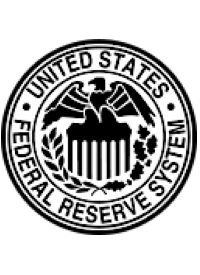
The Federal Reserve is seeking contractors to build a tool that will monitor and analyze blogs, news reports, and social-media chatter about the central bank and its policies, with a goal of being able to use “public relations” strategies to counter the growing barrage of negative publicity. But critics quickly added to the institution’s troubled image as the news spread by lambasting the half-baked scheme as “Orwellian” spying and “intimidation.”
The Fed’s “Request for Proposal” explains that the institution needs a platform to “monitor billions of conversations” and “identify and reach out to key bloggers and influencers.” Information collected will be used to measure the effectiveness of the central bank’s “public relations” and “communication strategies” — known in laymen’s terms as propaganda operations.
“There is need for the Communications Group to be timely and proactively aware of the reactions and opinions expressed by the general public as it relates to the Federal Reserve and its actions on a variety of subjects,” the document states. News outlets, Facebook, Twitter, forums, blogs, YouTube, and other social media platforms will all be targeted.
“A system like this is not cheap,” noted The Economic Collapse Blog, which called the Fed’s plan a “very creepy” part of a disturbing trend. “What the ‘authorities’ want is for us to shut up, sit in our homes and act as if nothing wrong is happening. Meanwhile, they seem determined to watch us more closely than ever.”
The system being sought, which the Fed calls a “Sentiment Analysis And Social Media Monitoring Solution,” should be able to gauge the sentiment and tone expressed by the public. And it must be able to gather information from different countries and regions in multiple languages.
“The solution must provide real-time monitoring of relevant conversations,” the Fed demanded, saying it should also be able to offer summaries or overviews of public sentiment on a variety of topics. An “alerting mechanism” that automatically sends out notifications based on a “predefined trigger” must be incorporated in the system, too.
Other demands listed by the central bank include the ability to track the reach and spread of its propaganda, “handle crisis situations,” and identify emerging trends in Fed-related discussions online. The desired system would also be able to differentiate between “influencers versus followers,” and gauge the true impact of specific anti-Fed criticism beyond simply comparing online traffic data generated by a particular source.
The financial analysis site ZeroHedge, apparently the first media outlet to uncover and expose the scheme, fiercely ridiculed the central bank and its tactics. But it also noted that “the Fed has just entered the counterespionage era and will be monitoring everything written about it anywhere in the world.”
The central bank, however, is not alone. Numerous critics of the plan have compared it to President Obama’s recently unveiled “Attack Watch,” a service for Americans to report negative statements about the administration or its policies. The citizen-snitching operation, as it has been dubbed, also prompted ridicule — but grave concern as well.
And as The New American reported in March, the U.S. military was exposed earlier this year seeking a tool that would allow a single government agent to operate multiple fake social-media characters simultaneously. The objective, similar to the Fed’s desired “solution,” is to monitor critics and influence public opinion through propaganda.
Analysts said authorities’ growing interest in tracking and manipulating public sentiment expressed online is a sign that the alternative media is becoming increasingly powerful as the “mainstream media” continues to implode. Others said the efforts also appear to be desperate intimidation tactics aimed at quieting the growing wave of public outrage aimed at the Fed, the undeclared wars, and the Obama administration.
Fury over the privately owned central banking system and its policies — multi-trillion-dollar secret bailouts, mass manipulation of markets, wild money printing, resisting a government audit, and more — has been steadily rising for years. Official documents released in 2009 revealed that even the U.S. military was concerned about the growing “End the Fed” movement.
But according to analysts, it was becoming clear that the central bank and its owners were on the defensive well before news of the coming spying and propaganda operations made headlines. In mid-2009, for instance, the Fed was forced to hire a top lobbyist to defend the cartel’s interests on Capitol Hill.
Experts predict that as the economy and the U.S. dollar continue to tumble, anti-Fed outrage will only intensify. Recent revelations about the central bank’s secret bailouts of foreign firms have certainly not helped its already-poor public image — and analysts say the worse is yet to come.
Proposals and bids from potential suppliers of the secretive “solution” being sought by the Fed are due on September 23. It remains unclear how much the system may cost.
Related Articles:
Feds Plotted Invasion of Social Media
Obama’s “Attack Watch” Website Urges Citizen Snitching
Federal Reserve Hiring Lobbyist for Political War
Fed Manipulations in the Crosshairs
Fed Showered Money On Foreign Banks
Fed Audit: Trillions For Foreign Banks, Conflicts of Interest



